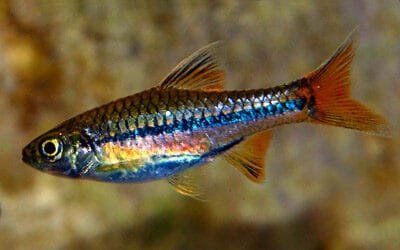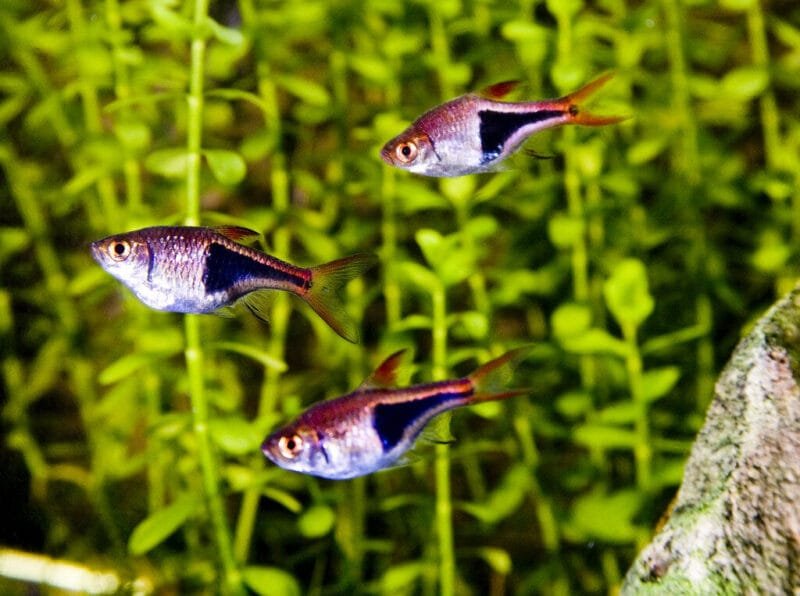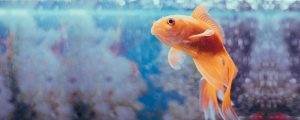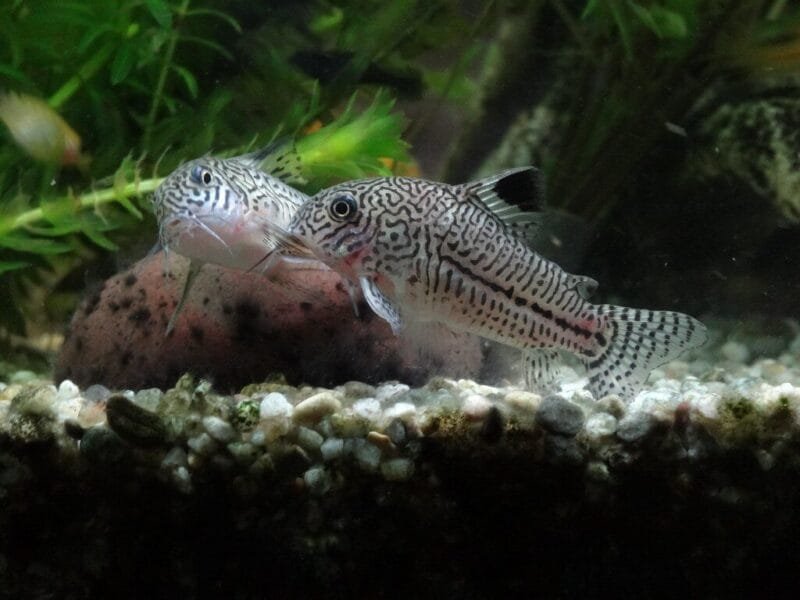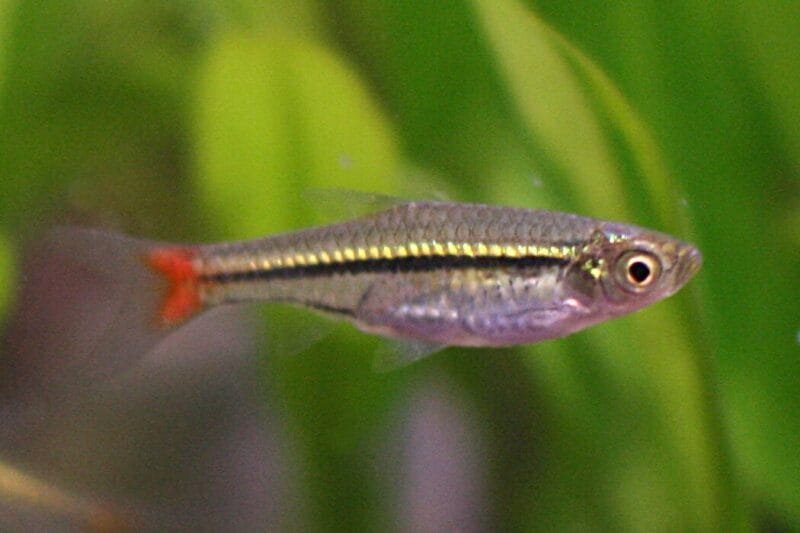The Redline Rasbora (Rasbora kalochroma) is one of the lesser-known yet most visually striking members of the Rasbora family. Known for its shimmering copper body and vivid red stripe that runs from snout to tail, this species adds a burst of color and vitality to any freshwater aquarium. Native to the soft, acidic waters of Southeast Asia, it embodies the beauty of the region’s blackwater ecosystems.
Common Name and Latin Name
-
Common Name: Redline Rasbora
-
Scientific (Latin) Name: Rasbora kalochroma
This species belongs to the Cyprinidae family, which also includes carps, barbs, and danios.
Native Habitat
The Rasbora kalochroma is native to Southeast Asia, particularly found in Malaysia, Sumatra, and Borneo.
It inhabits slow-moving streams, peat swamps, and blackwater rivers, where the water is heavily stained with tannins from decaying leaves and driftwood. These environments are typically shaded, soft, and acidic — characteristics that should be replicated in the home aquarium for the fish to thrive.
Size
Adult Redline Rasboras grow to an average size of 10–12 cm (4–4.5 inches), making them one of the larger species within the Rasbora genus. Their elongated bodies and reflective scales make them especially noticeable in planted aquariums.
Diet
In the wild, Rasbora kalochroma feeds on small insects, crustaceans, zooplankton, and plant debris.
In captivity, they are not fussy eaters and readily accept:
-
High-quality flake or micro-pellets
-
Frozen or live foods like bloodworms, daphnia, and brine shrimp
-
Occasional vegetable-based foods to mimic their omnivorous diet
A varied diet helps maintain their vibrant coloration and overall health.
Sexing
Sexing Rasbora kalochroma can be subtle but noticeable in mature adults:
-
Males: Slimmer, more vividly colored with brighter red lateral lines.
-
Females: Fuller-bodied, especially when carrying eggs, and tend to be paler.
During breeding periods, males display intensified coloration as part of courtship behavior.
Breeding
Breeding Rasbora kalochroma in captivity can be challenging but rewarding for experienced aquarists.
They are egg-scattering fish, showing no parental care. To encourage breeding:
-
Set up a separate breeding tank with soft, acidic water (pH 5.5–6.5), temperature around 26–28°C (79–82°F).
-
Use fine-leaved plants or spawning mops as egg deposition sites.
-
Feed the pair live foods to condition them.
After spawning, the adults should be removed immediately, as they may consume the eggs. The fry hatch within 24–36 hours and can be fed infusoria or liquid fry food initially, followed by microworms or baby brine shrimp.
Water Conditions
To recreate their natural environment, the following parameters are ideal:
-
Temperature: 24–28°C (75–82°F)
-
pH: 5.5–7.0 (preferably soft, slightly acidic)
-
Hardness: 1–10 dGH
-
Tank Setup: Dim lighting, driftwood, dried leaves (for tannins), and plenty of plants
The Redline Rasbora thrives in well-oxygenated, slow-flowing water with gentle filtration. Regular partial water changes help maintain pristine conditions.
Ease of Care
Care Level: Moderate
While not overly delicate, Rasbora kalochroma requires stable water conditions and a mature, biologically balanced tank. They’re best suited to aquarists with some experience maintaining soft, acidic environments.
Compatibility and Tankmates
Redline Rasboras are peaceful and social, doing best in schools of at least 6–8 individuals.
Ideal tankmates include:
-
Other medium-sized, peaceful species (e.g., Pearl Gourami, Harlequin Rasbora, Rainbowfish)
-
Bottom dwellers like Corydoras or small loaches
-
Avoid aggressive or fin-nipping species
They make excellent residents in community aquariums with fish of similar size and temperament.
Species Variations and Relatives
While Rasbora kalochroma is unique in its striking red coloration, it has close relatives within the genus, such as:
-
Rasbora elegans (Twospot Rasbora)
-
Rasbora trilineata (Scissortail Rasbora)
-
Rasbora borapetensis (Blackline Rasbora)
These species share similar body shapes and schooling behavior, though each displays its own distinct color patterns.
Albino Variant
An albino version of Rasbora kalochroma is rare but exists in captivity.
Albino Redline Rasboras feature pale pink to white bodies with faint red lateral lines and bright red eyes. They require slightly lower lighting and plenty of plant cover, as their lack of pigmentation can make them more light-sensitive and timid. Despite the color difference, their care and behavior are identical to the standard form.
Is It Good for a Community Tank?
Yes — provided the tankmates are peaceful and the aquarium is spacious enough.
They are excellent community fish, known for their calm nature and striking appearance when kept in schools. The larger size of this Rasbora means it pairs well with medium community species rather than very small nano fish.
FAQs About Rasbora kalochroma
1. How many Redline Rasboras should be kept together?
At least six, ideally more. They are schooling fish, and larger groups display more natural behavior and coloration.
2. Can Redline Rasboras live with shrimp?
Yes, adult Rasbora kalochroma generally coexist peacefully with larger shrimp species like Amano or Bamboo shrimp, though they may eat very small shrimp fry.
3. Why has my Redline Rasbora lost its color?
Dull coloration often results from stress, poor diet, or unsuitable water parameters. Improving water quality, feeding live/frozen foods, and reducing stressors (like aggressive tankmates) usually restores their color.
Conclusion
The Rasbora kalochroma, or Redline Rasbora, is a stunning yet underappreciated gem among freshwater fish. Its elegant shape, vibrant red stripe, and peaceful schooling behavior make it a standout in medium-to-large community aquariums. With the right setup—soft, tannin-rich water, shaded lighting, and calm companions—it will reward aquarists with its vivid beauty and grace.
Whether you’re an intermediate aquarist seeking a unique species or a Rasbora enthusiast expanding your collection, Rasbora kalochroma is a superb choice that embodies the spirit of Southeast Asia’s blackwater rivers.

